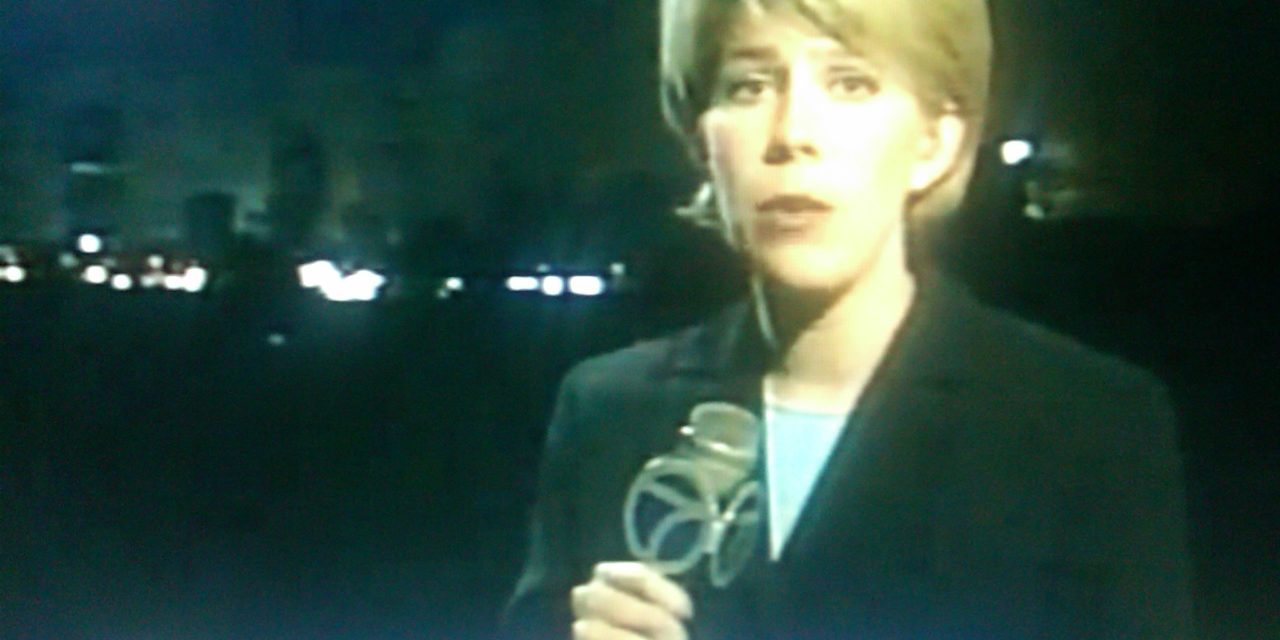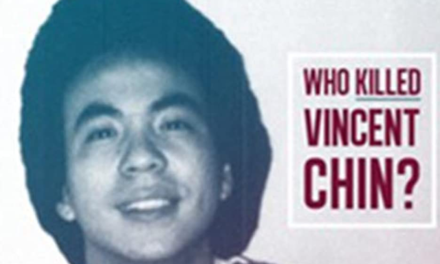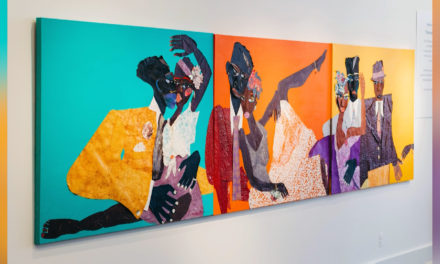By Christy McDonald, Anchor/Managing Editor, One Detroit
20 years since 9/11. It’s strange even typing that sentence.
I was sent to NYC the morning of 9/11 as a young reporter at WXYZ TV in Detroit. Covering the aftermath of a terrorist attack pushed me to my limits and left me with lingering anger and sadness that took months to cope with.
It took me 10 years to finally write down what I experienced that week and the next several years covering anniversaries and follow up reports.
I look back now at those experiences and stories, knowing they made me a better journalist, a better listener. I will never forget how people were willing to share their fear, sadness, and vulnerability with a young woman from Detroit clutching a microphone on the smoky streets of Lower Manhattan.
But I also can’t help feeling forever changed. In those 20 years, I advanced in my profession, and I experienced the complete joy of having three children. I now struggle with shattering grief after losing my husband to cancer.
That’s the amazing reflection anniversaries give us. The experiences that can help us grow, the pain we learn to live with and how we chose to move forward each day.
This was my journey to Ground Zero.. as remembered in 2011.
When I woke up on September 11th, 2001 in Royal Oak, Michigan I had no idea I would go to sleep that night in New Jersey – with the cloud of smoke from lower Manhattan visible from my hotel window.
9/11 is my generation’s “Where were YOU?” We all have the stories. No, I didn’t run for my life, watch the towers crumble from blocks away or lose someone I loved. I instead had a front row seat to history as a reporter. And for a week, struggled to cover the story of my lifetime.
I was sleeping on 9/11. Until the phone woke me up. My new husband (married almost 4 months) called to tell me to turn on the TV. As I watched both towers in Manhattan burn, my call waiting beeped in. It was my boss at Channel 7 (WXYZ). He told me to start packing and come to the station because I was going to New York. This was 9:20am.
By 11 that morning, after the Pentagon was hit, the towers collapsed and Lord knows whatever else was going to happen, I was in a van and driving to New York with photographer Nate Penn (thankfully an easy-going, kind, hard-working and huggable man). Midway through Pennsylvania, electronic road signs warned that all bridges and tunnels to Manhattan were closed.
When we reached New Jersey that evening, we had to talk our way through turnpike check points, in order to reach our satellite truck at Liberty State Park (LSP is just south of lower Manhattan across the river). As we got closer, we could see the smoke, and hundreds of ambulances lining the waterfront waiting for the injured that would never come. Minutes before I went on the air, my newsroom told me of a breaking report of more explosives in New York. I was numb.
The next day was a blur. I had about four hours of sleep and we still couldn’t get into Manhattan. Instead we interviewed rescue workers who came in and out of Liberty State Park to dig in the pile. People started walking up to our truck, asking us to put their missing family member’s picture on the air, in hopes of getting information. The acrid smoke was foul-smelling, and there was the constant, thundering parade of fighter jets circling Manhattan. They were the only planes in the air. I did five live shots from New Jersey that day/night, standing alongside a line of reporters, all talking at once. We learned the bridges and tunnels to Manhattan would open the next day. I dreaded it.
Thursday morning, we drove through the tunnel and into Manhattan. The traffic was terrible. Soldiers held rifles at the checkpoints. We parked near Chelsea off the West Side Highway in a public garage. I had a map in my pocket, several camera batteries in my backpack and carried the microphone. I was wearing blue tennis shoes. (blue. Who let me buy blue sneakers, let alone wear them??) Nate had the camera. We looked at each other and just started walking south. We wound our way through Greenwich Village, the streets were silent, which was just so bizarre. I remember at one point we saw garbage trucks packed with wreckage rumbling up the street. There was a mini shrine on the opposite corner, with candles and fliers of missing people. Sirens, I can’t explain the sirens. They were constant – whether chirping, or blaring, or beeping. The continued roar of fighter jets. The smoke. We stopped on Houston Street. I had to get my breath.
Where was I going? This was the hardest part. As a reporter, I’m usually sent somewhere to cover a story. A murder, a fire, a city council meeting. There’s only a certain amount of people who are a part of those stories – it narrows your focus.
But this. I was sent to the aftermath of a terrorist attack. IN NEW YORK CITY. The stories were everywhere, on every corner. Do I stop the woman crying on the sidewalk? The teen passing out water bottles to workers? The only guy I saw walking on his block? I froze. I was overwhelmed, anxious, scared and tired. Nate looked at me and said, “What do we do?”
For ten minutes we just stood there. Finally I saw sanitation workers walking in a group. Toward Ground Zero.
“We’re going to follow them,” I said to Nate.
Turns out they were sanitation workers that had been reassigned to clear wreckage at Ground Zero. We walked more, and ran into little stories everywhere. A cop gave us filter masks to wear. A woman pined a red, white and blue ribbon on my jacket. Each person I met, gave me the ammo to keep going. We stationed our live truck along the West Side Highway, near the staging area for work crews going in and out of Ground Zero. I had made it through the “What the hell am I going to see?” day. A few times the sirens were so loud and frantic, they made me want to burst into tears. After my 5pm live shot, I did.
On Friday, my toughest stop so far. A fire station in Midtown that lost 12 men. The Captain spoke with me on camera, but none of the guys did. I spoke with a few privately and one firefighter broke down while talking with me. There’s something about seeing a man cry, knowing he’s so emotionally and physically pushed to the limit, that he breaks down in front of a stranger. I won’t forget his piercing blue eyes.
The President arrived that day – and we talked to people about what he said, how they were coping. Much to our surprise, the President’s motorcade drove right past our live camera during the 5pm news. That night when we went to grab dinner, people started coming out to street corners with candles. Restaurants stopped, people stopped – as close to a moment of silence as you can get in New York. That night it all caught up to me – on the air I remarked that we had been there since Tuesday night. It was now Friday, and it felt like a lifetime had gone by. At this point I had traded in the TV reporter suits for a zip up jacket I bought at the Gap a few blocks away and jeans.
On Saturday we decided to find volunteers, loading food and supplies onto trucks for workers at Ground Zero. There were hundreds of skilled trades workers waiting to volunteer down at the pile. I managed to meet two men who were transporting those workers and asked if Nate and I could ride with them. The press wasn’t allowed within the Ground Zero boundaries. (There was even one reporter who impersonated a federal agent to get near the pile. He got arrested) We took a risk to even go that far, but I had this need to see it for myself. The guys agreed to take us, so Nate put his camera on the floor and covered it up. We didn’t touch it, but instead our volunteer drivers took pictures with their camera. And I finally got to see with my own eyes. It was as terrible as you can imagine, a smoking pile, so very high. The pictures on TV couldn’t capture it. Nate and I didn’t get out of the tow truck. We just looked. Later that night, we dashed into Midtown, begged a drug store film developer to turn the pictures around in an hour. (There were a lot of people getting film developed – showing their pictures of the World Trade Center in flames) We got them just in time for our 11pm story.
Two more days of reporting – finding people moving back downtown, the stock exchange opening back up- and then we went home. A full week after we left. I couldn’t watch much tv when I came home because I just found myself crying. I couldn’t fully react when I was in New York, because I was frantically trying to tell the story, setting up for 5 live shots a day, sleeping only a handful of hours a night and constantly thinking, “Ok, what’s next? Where do we go from here?” It came pouring out for weeks after.
That year I went back to Manhattan two more times, and did features on the viewing platform at Ground Zero and Fresh Kills Landfill, where they processed the remains. I was there for the first and second anniversaries. It felt better to be back those times – it was less frantic, there was rebuilding, life moved forward. I was able to be a part of a healing New York, which made me love the city even more.
This anniversary, I will be at home, with my three children and husband. I wonder when my kids will start to be aware of 9/11 or how I’ll explain it to them. I still have all the newspapers I saved from that week, and those silly blue sneakers. It has been difficult to look back at this old video. I have always been uncomfortable seeing myself on TV, I can’t help but be critical of everything: my voice, hair and gestures. I also feel bad for that girl from 10 years ago, in the middle of it all – sometimes talking too fast, talking too much or struggling to find the right word. I want to tell her, it’ll be ok. And it is, though military jet fly overs still make me shaky. But I find that many of the decisions I’ve made in my life have been influenced by what I did and what I saw that week in New York. Admiration for people who persevered, even after their lives changed in an instant. The knowledge that life is fragile. And faith – I felt that God watched out for me and helped put people in my path, so I could do the job I had to do.
As journalists, we all want to tell THE story. I got that chance. Ten years later, and it is still so clear. I will never forget. I hope we all never forget.
Blue shoes, mask and newspapers









